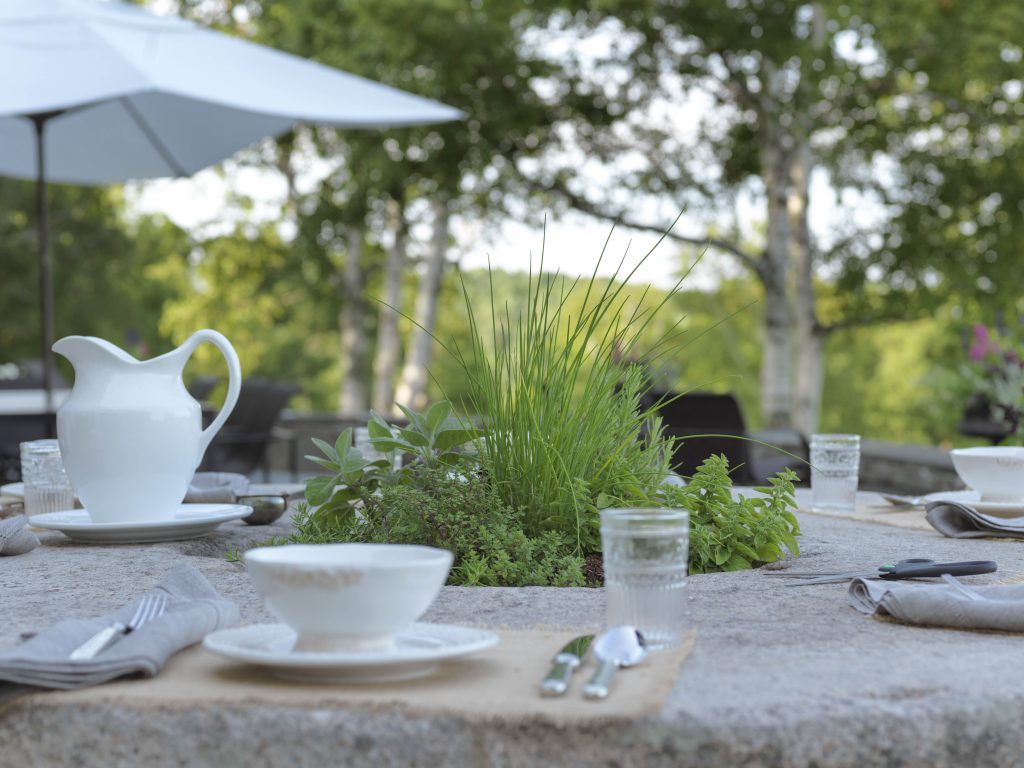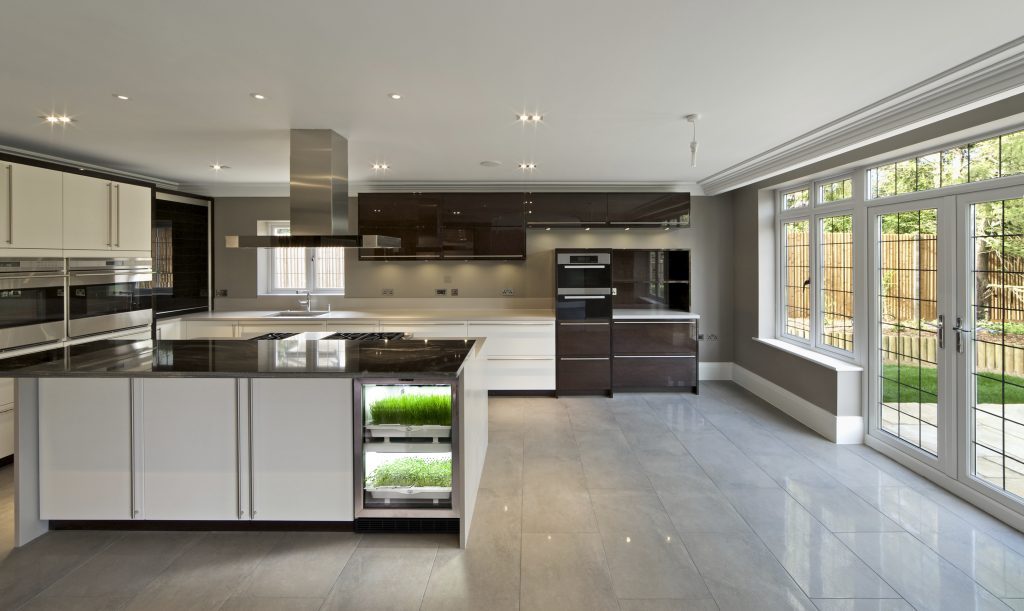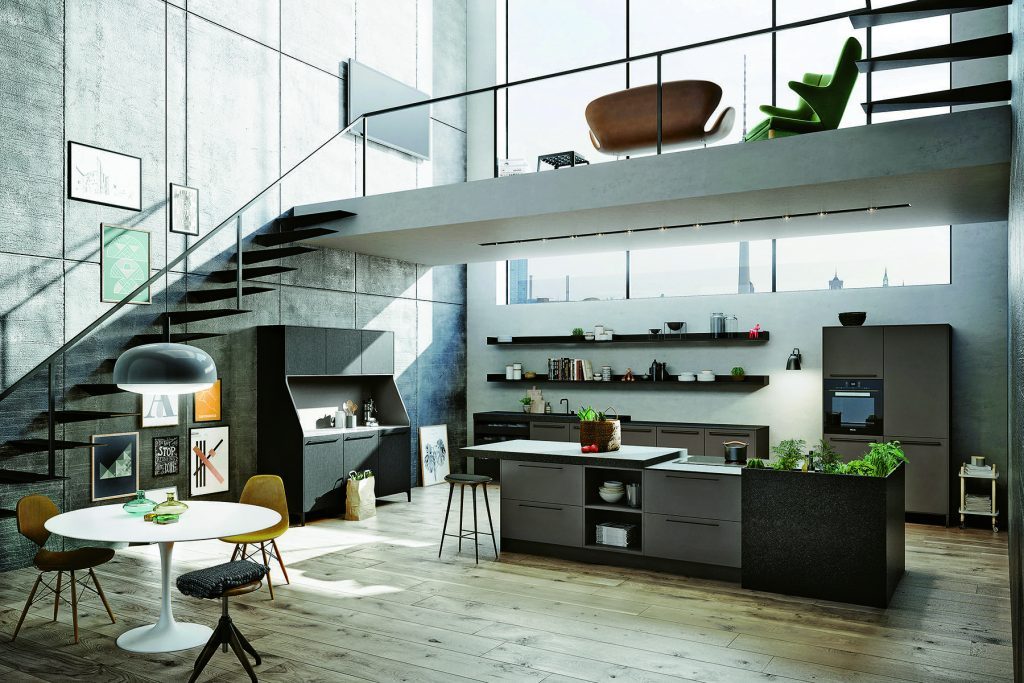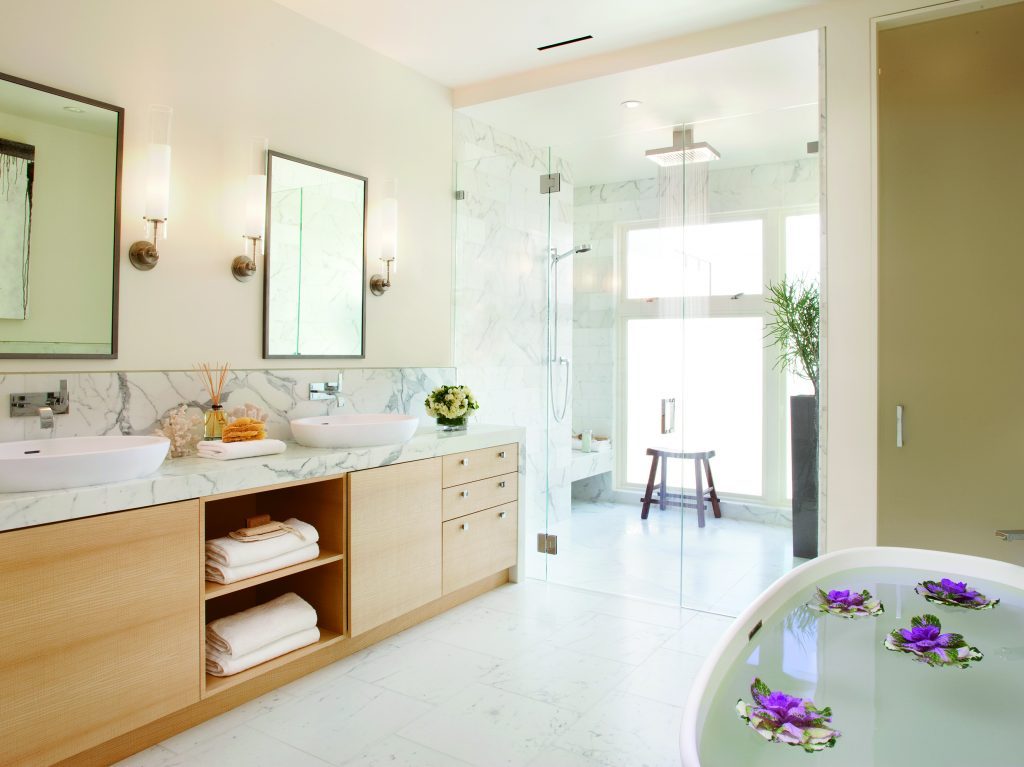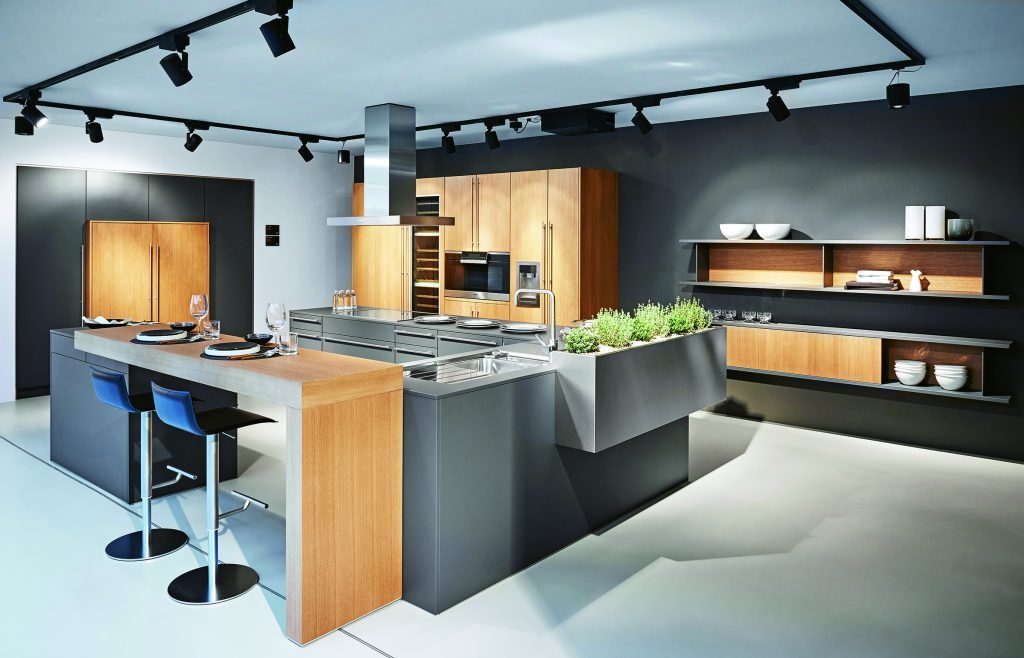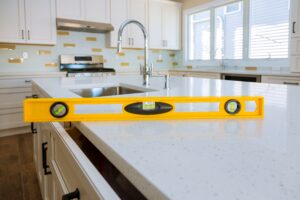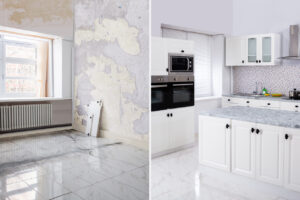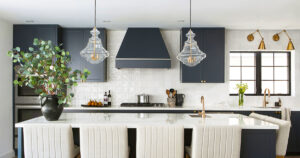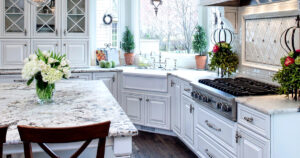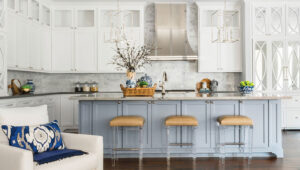AUTHORS Jamie Gold
Plants can provide a healthy and calming addition to the kitchen or bath – and with the right planning and coordination, they can provide an equally healthy addition to your profitability.
Photo New Landscaping Ideas that Work/Photo © Susan Teare—- Design by JMMDS
Maybe you don’t know a pothos from a plumeria, but maybe you don’t need to, either; there are plant pros available to help you and your clients choose the right species for their kitchens, bathrooms and outdoor kitchen and bath spaces. Just as you’d want to consult with a home technology consultant on wiring a connected entertainment system for one of your projects, the growing presence and success requirements of plant installations in both indoor and outdoor kitchens and bathrooms makes partnering with a specialist a savvy business choice.
As with smart home technology, the breadth of what you don’t know you don’t know and potential costs and complexities involved can seriously bite you in the bottom line. Since plants are exploding in popularity, especially with the massive millennial generation, and manufacturers are taking note, you should, too!
Photo Credit | Urban Cultivator
Growing trend
Rebecca Bullene, co-owner with her husband Adam Besheer of Brooklyn, NY-based botanic design and build firm Greenery NYC, has seen a huge uptick in demand in the past five years. “Our business has grown exponentially as more and more individuals seek to incorporate plants into their living spaces.” Demand is being driven from both pros and end users alike, she shares. “I think more clients are asking to integrate plants into the interior design and we are a company that understands how to build the infrastructure and systems to successfully grow plants long term indoors. It is a somewhat specialized skill set, to both know what plants to use and how to adapt the conditions through irrigation and lighting to optimize their growth, so people turn to us to help design and build plant installations as well selecting the appropriate plants for various site locations.”
Pondering the increased demand, she theorizes, “I think this is, in part, a response to being in front of screens all day – people crave a connection to nature and a break from the digital world. Additionally, I think more people are becoming aware of the many health benefits that come from living in close proximity to plants.” Those benefits include improved air quality, potential nutrition through greens, flavor from herbs and an overall feeling of welcome and relaxation, she notes.
New Trends – Kitchen countertops
Manufacturers are seeing a trend here, too. SieMatic and Poggenpohl have both built plant features into their cabinet lines, and Urban Cultivator, a Canadian company, has created an under-counter appliance to grow micro-greens and herbs in your kitchen. There was also an NKBA Thirty Under 30 team that won a KBIS Product of the Future award this year for its “Living Fridge” concept with built-in herb grower. Will the team be future manufacturers, as well, or will a well-known appliance maker license the concept? One can hope!
John Novella has been repping Urban Cultivator in four southwestern states since the product launched here four and a half years ago. The premium product has seen “nice year-after-year growth,” he says, with “East and West Coast markets” and “markets with new-home construction” being the fastest sellers.
Herb Garden
SieMatic’s URBAN Herb Garden was released in the U.S. market in 2016, notes Marcia Speer, director of retail markets for SieMatic Möbelwerke USA. It is now available in all 60 of the company’s global markets. “It appeals most to urban markets that place a priority on space, paired with a desire for more natural warmth to surround them. We found the URBAN collection tends to skew slightly younger than some of our other products, and that has been true with the herb garden as well.”
The product is not freestanding, but designed to install against cabinets or a wall. “We encourage designers and homeowners to be thoughtful about sunlight; to make sure plants get the right amount to thrive, the herb garden should be placed carefully, [and] the right plants should be chosen for the sunlight in each homeowner’s particular kitchen.” (Hint: Here’s where a plant specialist can be helpful.)
Challenges of growing plants indoors
Despite the challenges of growing plants indoors, these products have been successful. “We’ve been very pleased with the response to our herb garden – the reception has been more than we anticipated in the U.S. and Canada. Blog coverage, in particular, has brought a number of clients to discover SieMatic and approach our designers,” Speer observes.
Poggenpohl has also built a stainless steel plant holder into its product lines, and a few other new features being introduced are plant-friendly.
Photo Credit | Siematic USA
Plants in kitchens
Julie Moir Messervy, CEO of landscape architecture and design firm JMMDS in Saxtons River, VT and Home Outside online design service and mobile app, is also the author of New Landscaping Ideas That Work (Taunton Press) and seven earlier plant-related books. While her books, residential services, and digital offerings help homeowners have greener thumbs, she also works with architects, builders, interior designers and other industry pros to ensure that plantings work in the indoor and outdoor spaces they’re designing. For kitchens, she says, “The new craze is vertical, indoor salad gardens with their own light source.”
“More and more people are interested in growing their own food,” Bullene comments, “and herbs are a great place to start without giving up too much living space. We recently installed a freestanding herb wall we designed that comes with its own self-contained irrigation tanks and LED lighting so that a particular client could grow food in their low-light kitchen space. We get at least a few inquiries each week on how best to grow edibles indoors.”
Photo Credit | Shades of Green Landscape Architecture and Troon Pacific
Plants in bathrooms
Plants are showing up in bathroom projects, too, and bring some definite benefits: “Plants help reduce stress and, as a place of respite, it’s great to incorporate plants into bathroom spaces,” Bullene recommends. “Bathrooms tend to be humid, so it’s a place that certain tropical plants enjoy, and of course the power of fresh air in a bathroom cannot be overstated,” the botanic designer adds.
“Plants that like moisture in the air are very happy in bathrooms,” declares Ive Haugeland, a Sausalito, CA-based landscape architect and owner of Shades of Green Landscape Architecture. Ferns and air plants do well in those spaces, she suggests. “Make sure you have enough natural light. Plants usually look good anywhere, but when inside in pots, we are 100 percent in control of their environment and chance of survival.” The planters or pots should also look good with the rest of the design, she notes. There are now quite a few to choose from, including self-watering models that make life easier for clients.
“Some people are creating naturalized garden walls, with natural stones, craggy ferns and overhead faucets that mimic waterfalls,” designing a feeling of the outdoors into their indoor spaces, observes Messervy.
Bullene shares that “living walls are becoming a beautiful trend in bathrooms. Because the humidity and heat are generally higher in the bathroom, it’s often an optimal space to create lush displays, and their already ample plumbing and drains make incorporating watering systems very easy.”
Photo Credit | Poggenpohl
Plants in outdoor kitchens
“We’ve designed living walls, vegetable gardens, pots with herbs and even a millstone table with herbs planted in it for plucking. Probably most popular, because they are the easiest to plant and care for, are containers – you can plant just about anything in a container from small trees to shrubs, vegetables, herbs or flowers,” Messervy recommends.
Containers are popular with Greenery NYC’s urban clients, too. “We have installed many veggie gardens to grow tomatoes, strawberries, peppers, cucumbers, melons and lots and lots of herbs,” recalls Bullene. Of course space is very limited in New York City outdoor kitchens, so we’re mostly trying to maximize the yield in a very small amount of space; container gardening plays a big role in that.” Haugeland’s clients are focused on living architecture: “Most often the plants are for screening, or for dividing the space into rooms, or to create a backdrop for the kitchen. Sometimes we do plant herbs or a vegetable garden near the outdoor kitchen.”
Planning for plants
Just as you do for so many other aspects of your projects, you need to plan ahead for plant installations. “The earlier a plant professional is brought into the build discussion, the better,” Bullene says. “It can be heartbreaking to have to re-open a wall and run more plumbing on a near-finished project because the design/build team didn’t know where the plumbing should be located for the plants.”
Last words
Plants are healthy for your clients, for the planet and, with the right planning and coordination, your profitability

